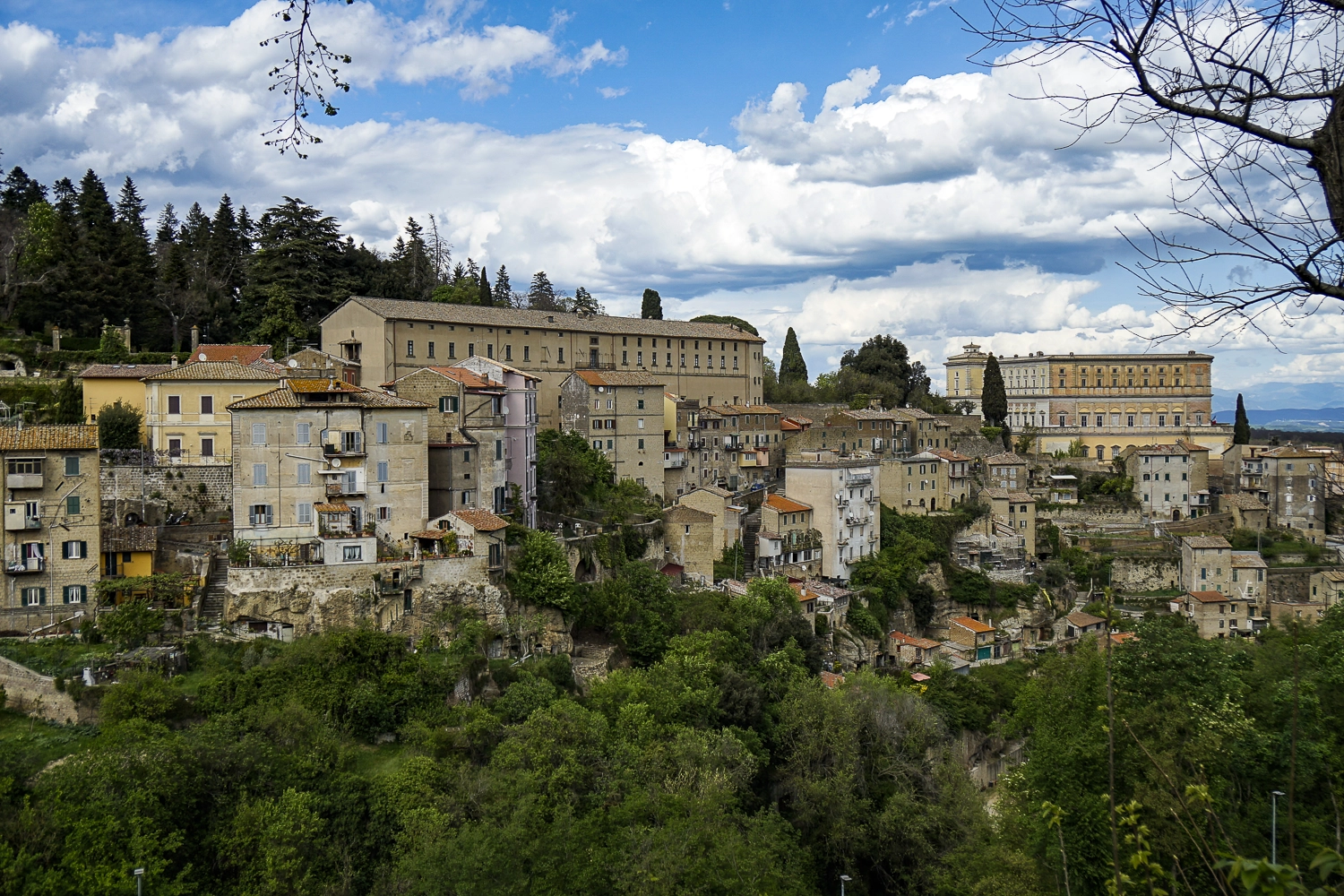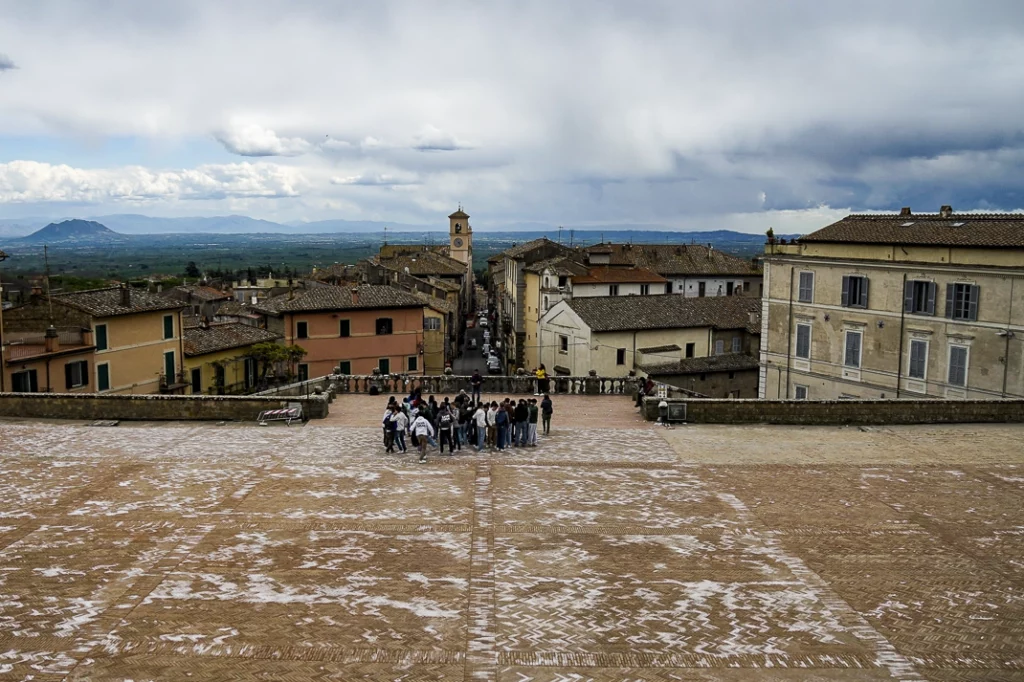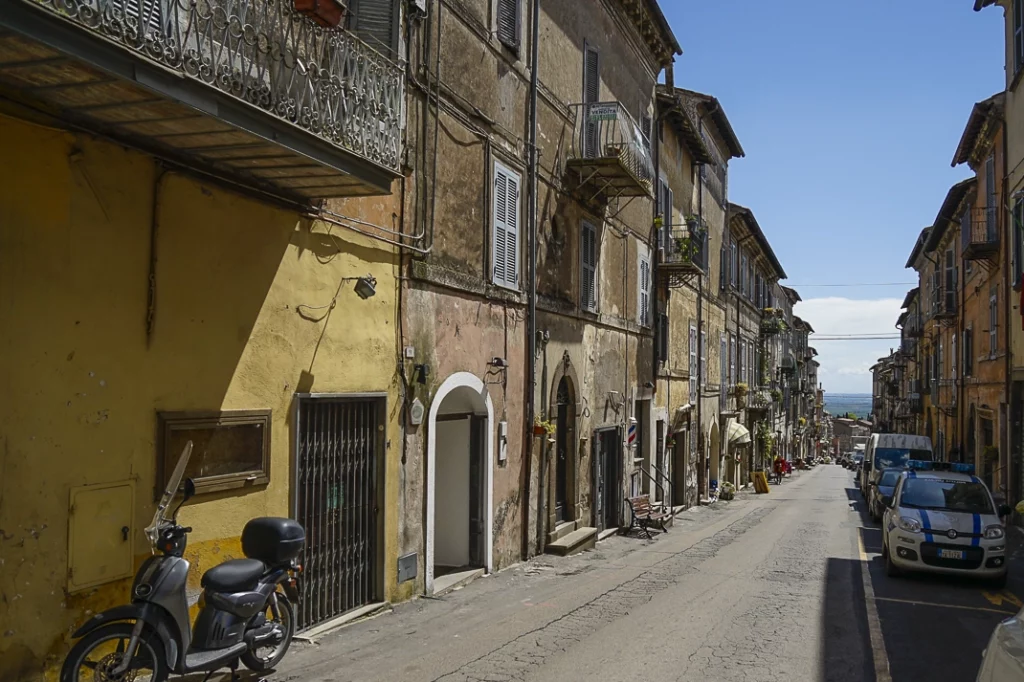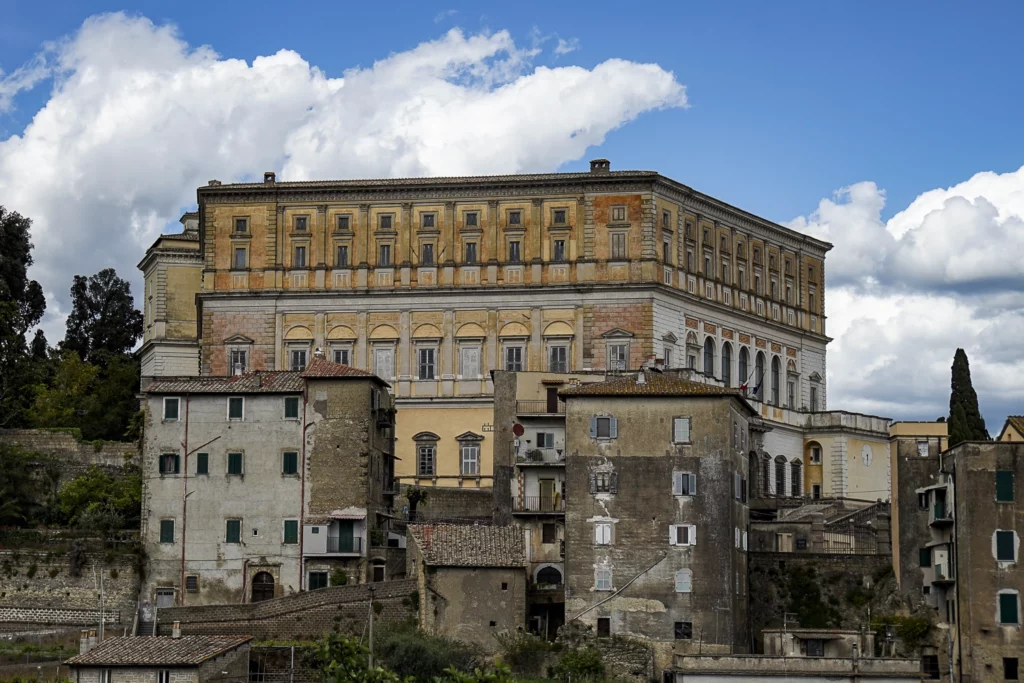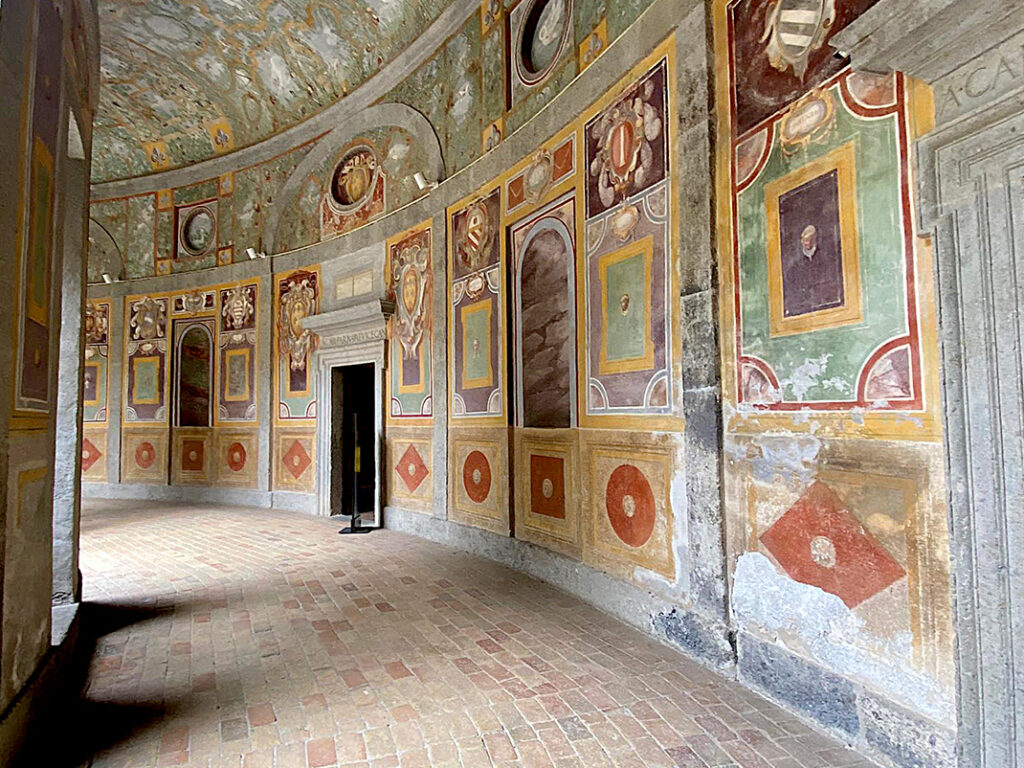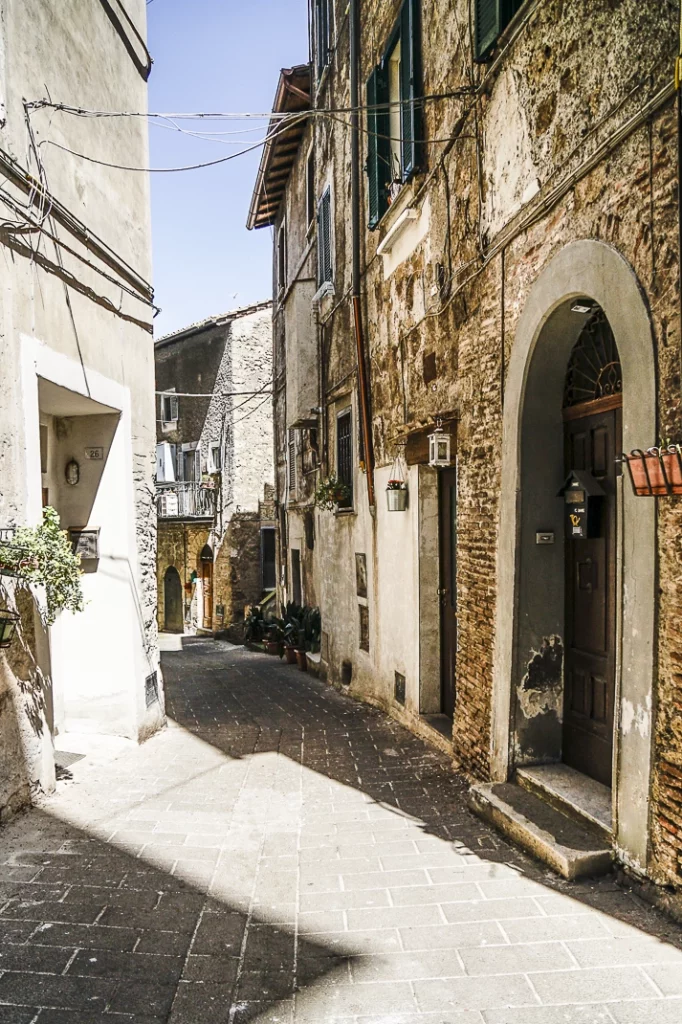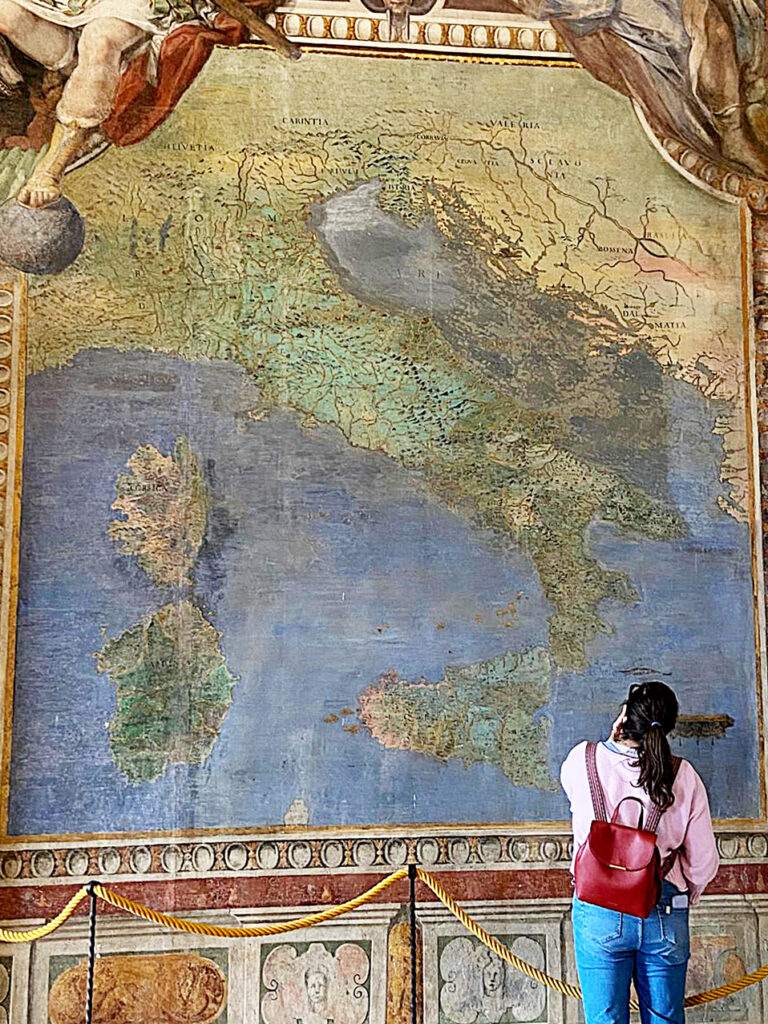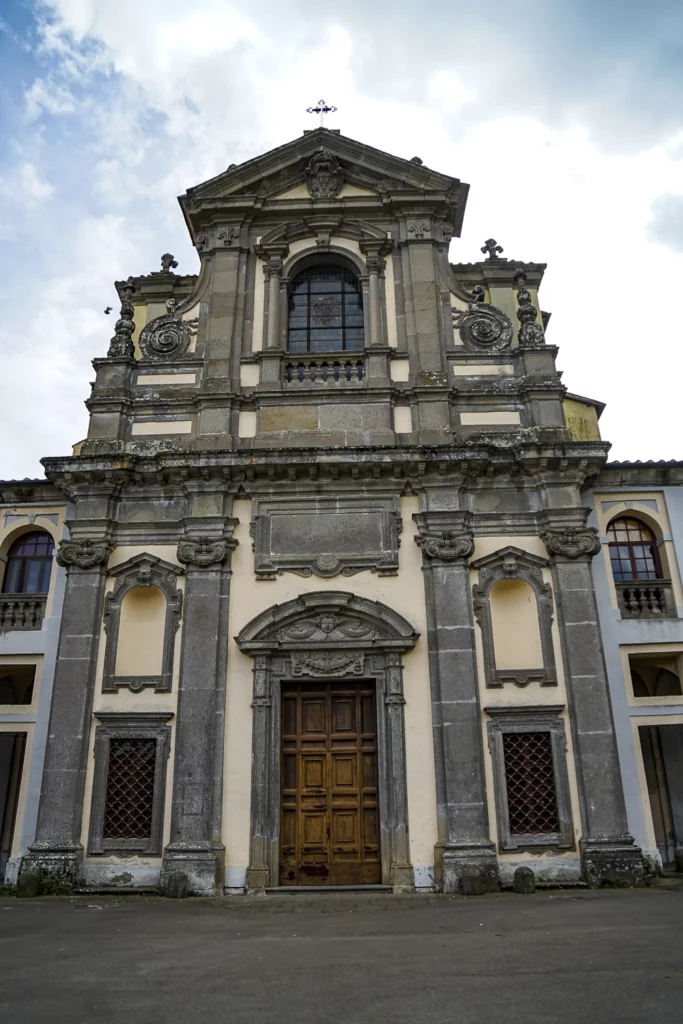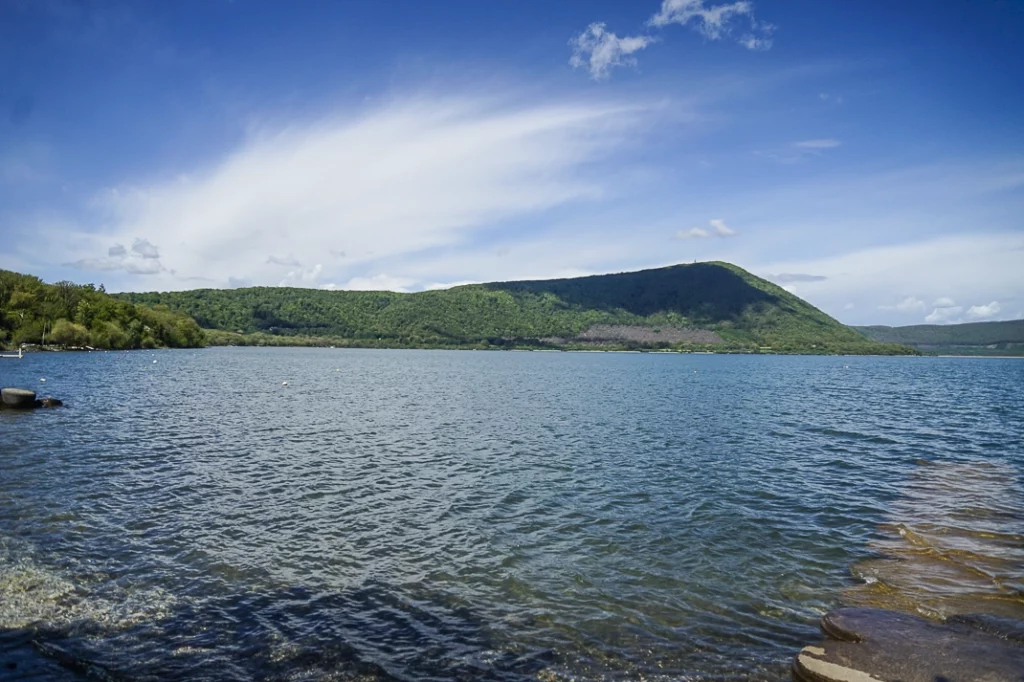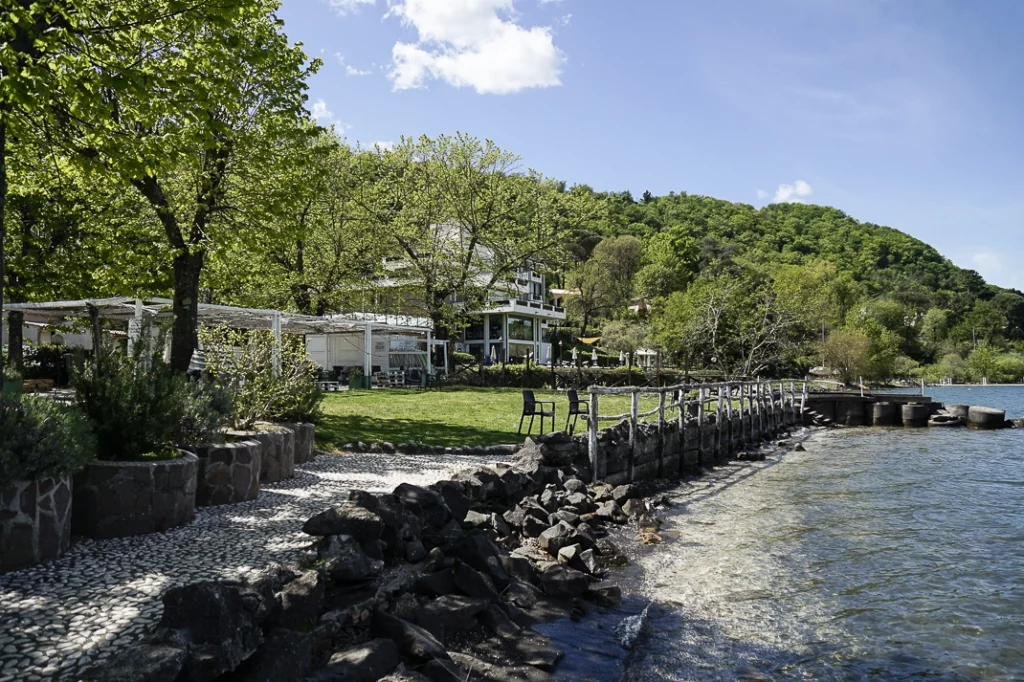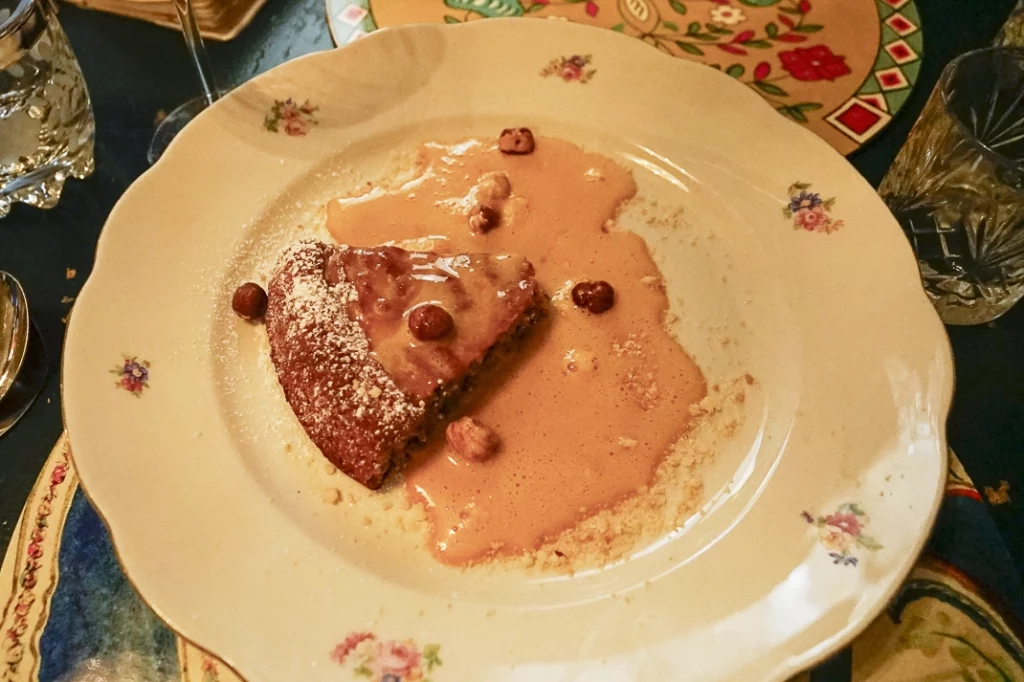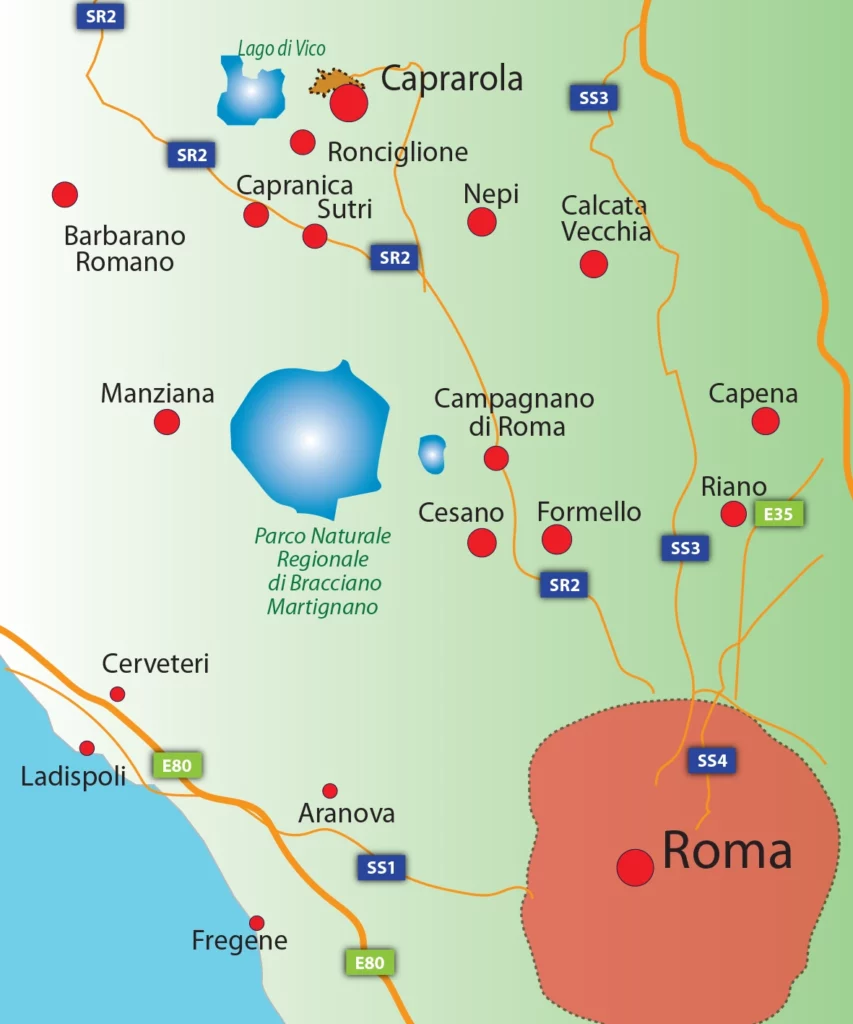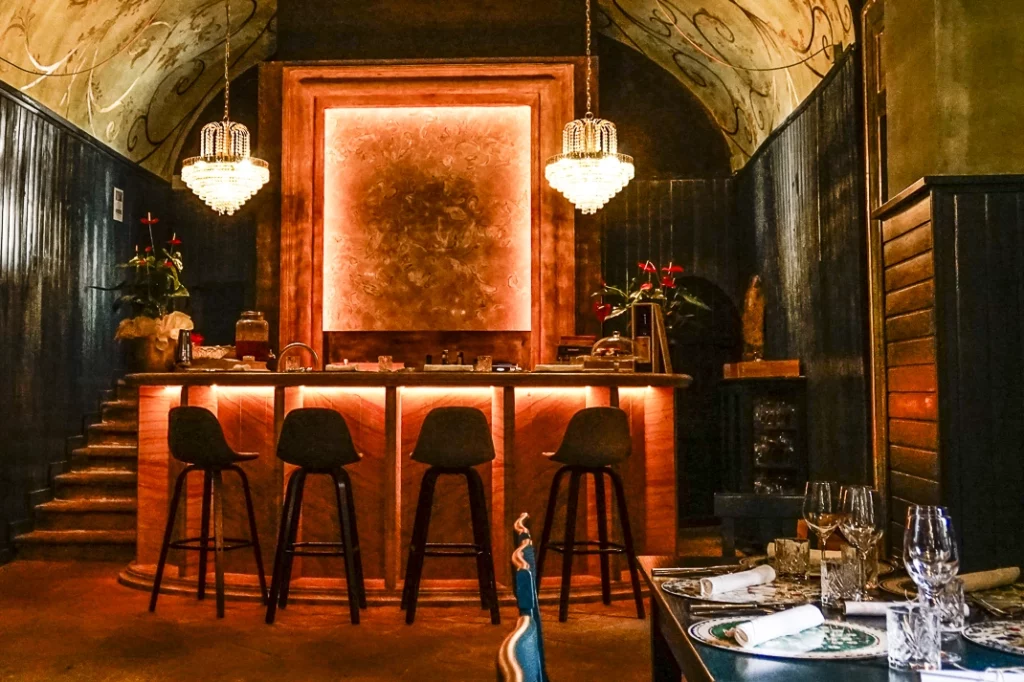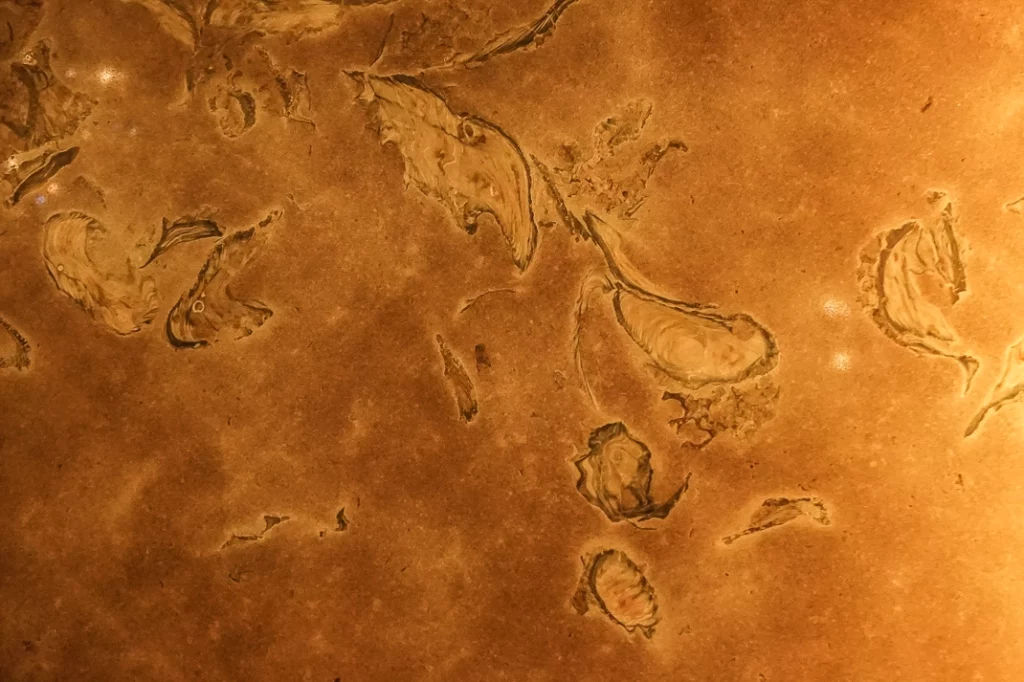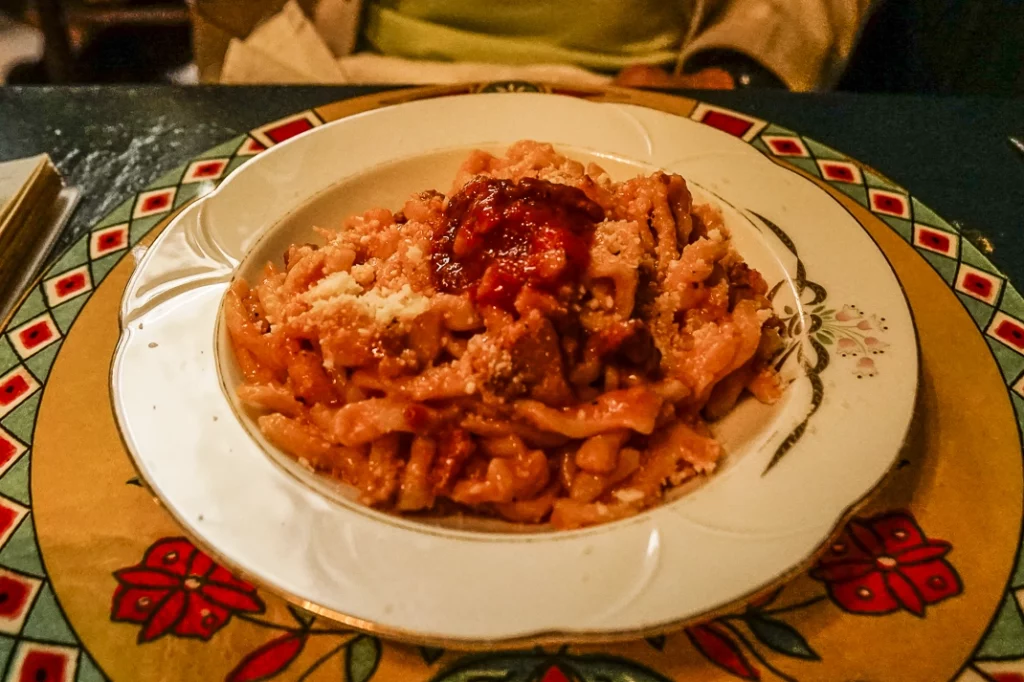Caprarola: Hazelnuts and a pentagonal palace on a hill
Take a walk up Caprarola’s main drag and you wonder why this is one of the most underrated towns in Lazio. Then you reach the end of Via Filippo Nicolai, lined with old buildings with crumbling walls badly in need of paint.
Sitting atop the hill stands one of the most unique palaces in Italy. Palazzo Farnese doesn’t have a square or rectangular configuration. It has five sides. It’s pentagonal. And inside those five walls are some of the most beautiful rooms you’ll see. The 16th century palace was home to Cardinal Alexander Farnese, the grandson of Pope Paul III and each room screams of regal opulence.
So does the pasta amatriciana at Trattoria del Cimino down the hill from the palace. The classic Roman dish is considered the best amatriciana in Italy according to one website. If you save room for dessert, Caprarola is one the hazelnut capitals of the world. Stop by the store Assofrutti across the street from the trattoria and pick yourself up some nocciola cream for the ride home.
Things to do
1 • Palazzo Farnese. The Farneses, a famous Roman family of nobles, built the palace in the 16th century under the guise of Cardinal Alexander the Elder.
Designed by Vignola, heavily influenced by Michelangelo, it’s built with five sides in order to have a circular courtyard in the middle.
Enter the palace and in the middle of the courtyard, surrounded by 20 pillars supporting 10 arches, is a cement manhole cover with holes for eyes, nose and a mouth to form what’s described as “a grotesque mask.” This collected rainwater when the Farneses lived there.
The two floors that wrap around the courtyard have fantastic artwork. The Winter Apartment is lined with frescoes of animals. The Loggia of Hercules, with giant faded frescoes representing the four seasons, has a gorgeous fountain with four marble statues of Cupid.
One room is dedicated to famous Farnese family deeds from their earliest days from the 12th to 15th centuries. There is Alexander’s study, a tower room with the family coat of arms and also the Map Room. It features a giant map of the world behind a long desk and maps of each continent on a different wall panel.
Go behind the palace and roam the immaculately manicured Secret Garden.
Info: Piazza Farnese, 39-07-61-646-052, 8:30 a.m.-7:30 p.m. Tuesday-Sunday. Price €10.
2 • Chiesa Santa Teresa. Built in 1623, it was used by the order of Carmelites until 1968. Two manuscripts of Saint Teresa, a famous Spanish mystic and Carmelite nun, are in the library. Today it is used for spirituality and hospitality. Just go for the view. It’s situated on a volcanic outcrop with terrific views of Palazzo Farnese and the town. From this angle, away from the drab borgo (central neighborhood), Caprarola’s uniform yellow brick architecture gives the town an arty feel.
Info: Viale Santa Teresa 7, 39-07-61-644-875, https://www.parrocchiacaprarola.it/it/chiese, 7 a.m.-7:30 p.m. October-April, 7 a.m.-9 p.m. May-September.
3 • Lago Vico. Located just four miles west of Caprarola, Lake Vico is a nice place to while away a sunny afternoon. It’s one of Lazio’s smaller lakes. It’s only five square miles (12.9 square kilometers) but it is rarely crowded and has great views of the towering forests across the water. Go past the private village of Punga del Lago and take a side street to Ristorante Fioro’ and the Copacabana Wine Bar. Here you can park and take one of the many covered tables on the lakeside. There is no beach, but there is lake access from here.
Hazelnut City
When you drive into Caprarola, you can tell what kind of dessert you’ll eat. For dozens of miles you drive between endless fields of hazelnut trees.
Italy has 214,000 acres (86,725 hectares) of hazelnut orchards and Caprarola has dozens of hazelnut production companies. Tenuta Santa Maria Societa Agricola has recent sales as much as $1.23 million a year.
Hazelnut desserts are sprinkled all through menus of Caprarola restaurants, such as the delicious torta di nocciola at Trattoria del Cimino (see below). For hazelnut products go to the outlet store of Assofrutti, one of the area’s top producers with 24,700 acres (10,000 hectares) of hazelnut trees.
Info: Assofrutti, Via Filippo Nicola 27, 39-07-61-646-658,
9:30 a.m.-1 p.m. Tuesday-Sunday, 9:30 a.m.-1 p.m., 4:30-5:30 p.m. Friday-Saturday.
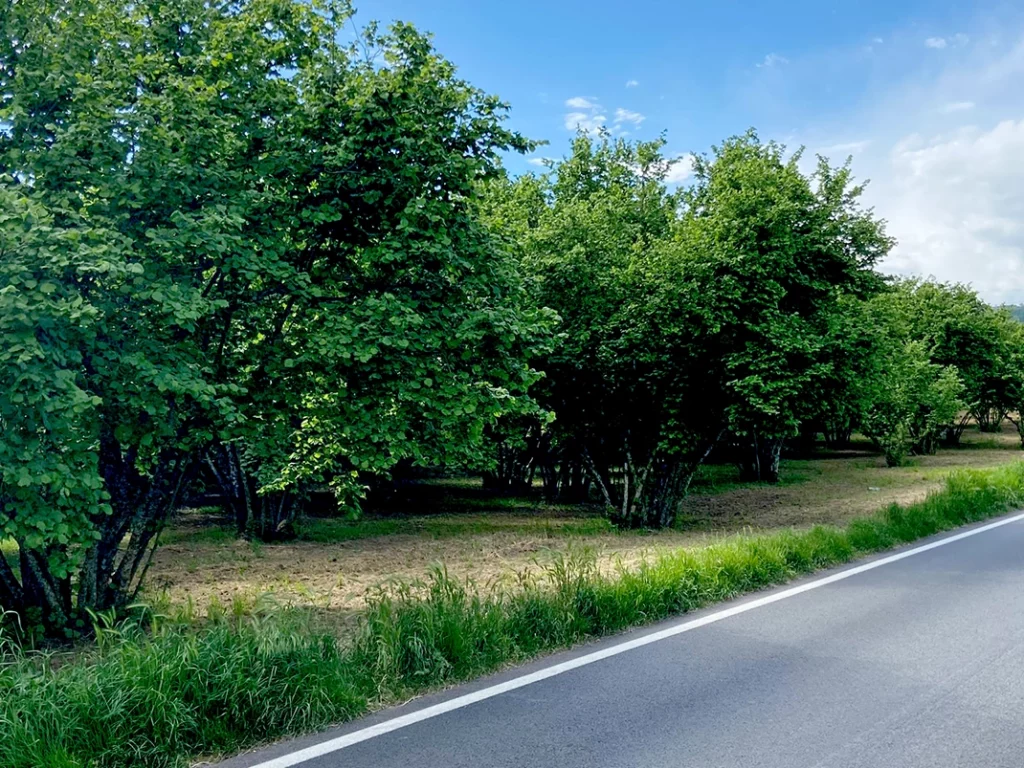
Where is it:
35 miles (60 kilometers) north of Rome.
How to get there: Take bus from Rome’s Piazzale Flaminio to Stazione Grottarossa. Leaves every 30 minutes. The 17-minute trip is €2-7. Change bus for Stazione Saxa Rubra. Bus leaves every 20 minutes. The eight-minute trip is €2-7. Change bus for Caprarola. Leaves every two hours. The 1-hour, 10-minute trip is €3-5.
Driving takes about an hour.
For more information:
VisitCaprarola, Palazzo Fusaro, Via Filippo Nicolai 17, 39-3479-152-3225,
10 a.m.-1 p.m. 2-4 p.m. Friday, 10 a.m.-1 p.m., 2:30-4:30 p.m. Saturday-Sunday.
Where to eat:
Trattoria del Cimino, Via Filippo Nicolai 44, 39-07-61-646-173/39-371-484-2982,
https://www.instagram.com/trattoriadelciminoigsh=Z2J0eDY3cThiaGVj&utm_source=qr
11 a.m.-2:30 p.m., 7:30-9:30 p.m. Wednesday-Friday; 11 a.m.-6 p.m., 7:30-9:30 p.m. Saturday-Sunday; 11 a.m.-9:30 p.m. Tuesday.
Opened in 1895 and in the Calistri family for five generations, Cimino is in an elegant restaurant built in the town’s first palace built in 1300. Behind the elegant bar is a marble slab that dates back 2 million years, according to the Calistris.
According to the wine and food website Vinous, Cimino has “La Migliore Amatricana d’Italia (The best amatriciana in Italy).” The amatriciana truly is spectacular and made with pici, the short, twisty pasta native to the area. Mains start at €12.



